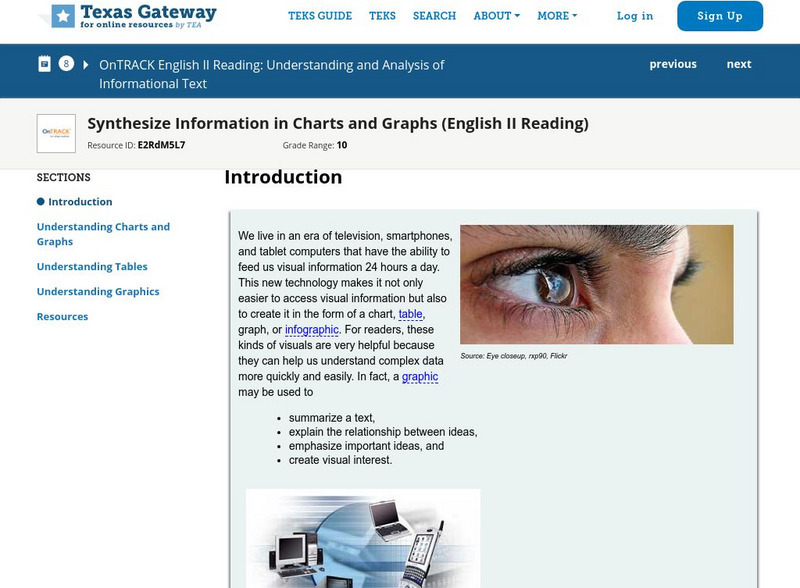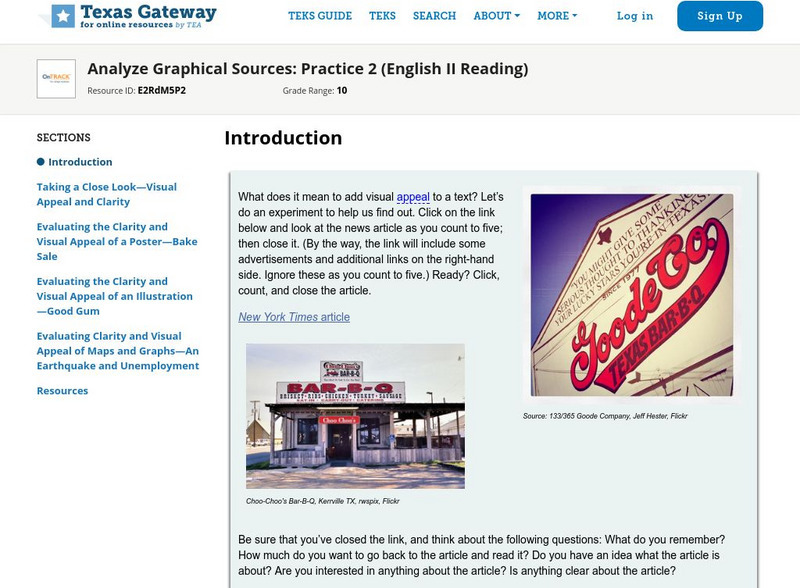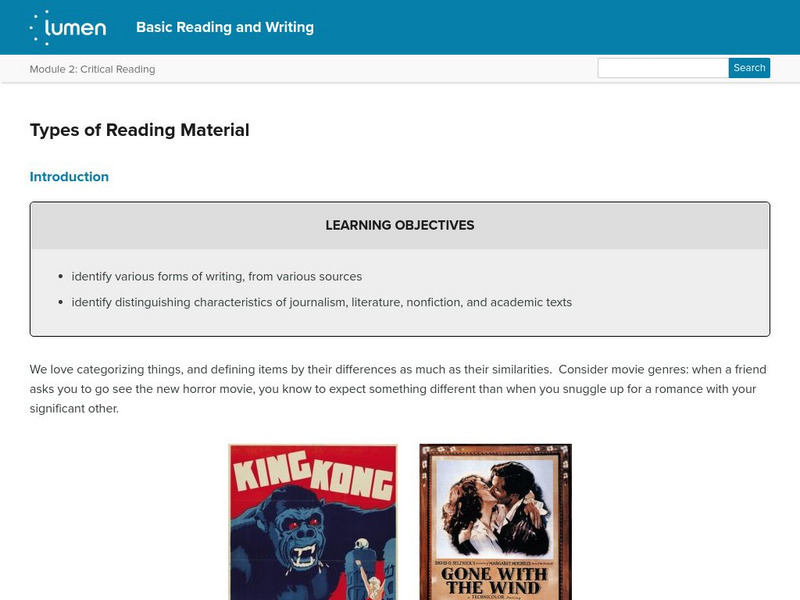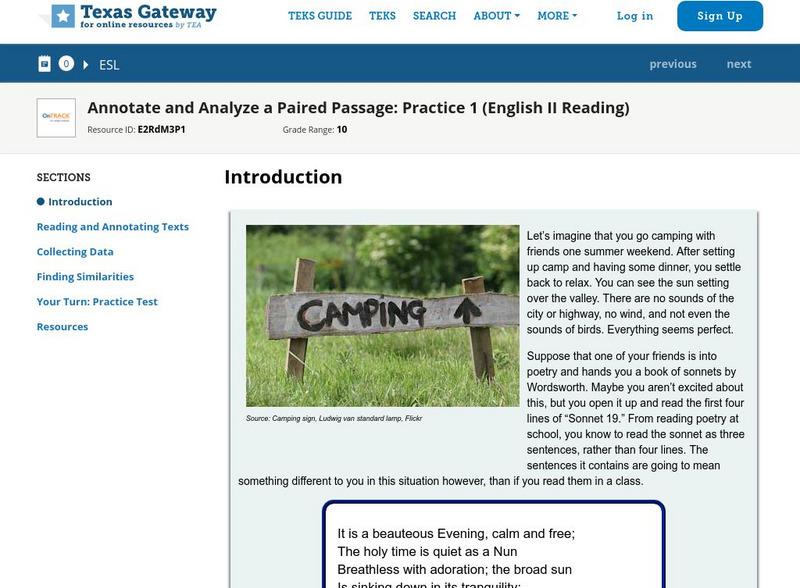National Archives (UK)
National Archives Learning Curve: How to Read a Document
This site is a lesson on Document Analysis using a letter written by Anthony Eden to PM Chamberlain in late 1937.
Stanford University
Stanford University: Spatial History Project
Several individual projects are going on under the umbrella of the Spatial History Project. These projects are developed and worked on by students, staff, and scholars as they expand studies within the humanities through spatial,...
Ohio Test Prep
Ohio Test Prep: Module 8: Economics
Learning module prepares students for the state test in Social Studies Economics portion, including organizing information with Tables and Charts, Entrepreneurs, and Saving. Lesson includes video tutorial, interactive review games, and...
Ohio Test Prep
Ohio Test Prep: Module 1: Historical Thinking: Timelines and Chronology
Ohio state test practice material on Historical Thinking provides specific information on the use of Timelines and Chronology in studying history. Module includes video tutorial, interactive review games, and assessment.
Ohio Test Prep
Ohio Test Prep: Module 7: Economics Skills
Learning module on economic skills prepares students for Ohio state tests in Social Studies by provides specific information on comparing data sets. Includes video tutorial, interactive review games, and module assessment.
Ohio Test Prep
Ohio Test Prep: Historical Thinking and Historic Documents
Learning module prepares students for the Ohio state tests in Social Studies. Module 1 contains resources for learning about historical thinking and historical documents. Includes video tutorials, interactive practice and review, and...
Ohio Test Prep
Ohio Test Prep: Theses and Evidence
Three videos selected to help students prepare for the Ohio State test in Social Studies in which they learn or review how to develop a thesis and use evidence to support or refute a position.
Other
Nielsen Norman Group: Low Literacy Users: Writing for a Broad Consumer Audience
An article describing what lower-literacy is and the characteristics and differences between them and higher-literacy users. There is also a section on improving usability for lower-literacy users especially pertaining to the internet.
Stanford University
Sheg: Document Based History: Reading Like a Historian: World War I & 1920s
[Free Registration/Login Required] Students use primary source documents to investigate historical events. In this lesson students analyze historical evidence as they consider eight document-based questions about the post-war era of the...
Other
The Dbq Project
Teach students how to read with understanding, think straight, and write clearly using document-based questions.
Annenberg Foundation
Annenberg Learner: Letters: Use Your Document Detective Skills
Read three letters, one at a time, about events of historical significance. Identify the region and era particular to each letter, and answer additional questions about the information it contains.
University of California
History Project: Process of Historical Investigation [Pdf]
Outlines the process of historical investigation for students by teaching them the steps of research, analyzing evidence, and making interpretations.
Other
Nova Southeastern Univ: Research Paradigms and Meaning Making: A Primer [Pdf]
This paper is intended as an introduction to research methodology and how scientists construct meaning from a qualitative data analysis. (Published 2005)
Texas Education Agency
Texas Gateway: Synthesize Information in Charts and Graphs (English Ii Reading)
Synthesize information that you find in charts and graphs.
Texas Education Agency
Texas Gateway: Analyze Graphical Sources: Practice 2 (English Ii Reading)
[Accessible by TX Educators. Free Registration/Login Required] Analyze the factual, quantitative, and technical data in graphs and charts.
Texas Education Agency
Texas Gateway: Analyze Graphical Sources: Practice 2 (English I Reading)
Analyze the factual, quantitative, and technical data in graphs and charts.
Lumen Learning
Lumen: Critical Reading: Types of Reading Material
This lesson focuses on the types of reading material and their distinguishing features. It also included two videos including the key features from a newspaper story video and a video that defines scholarly articles.
Lumen Learning
Lumen: Analysis: Putting It Together: Analysis
This lesson focuses on analysis including an understanding of what analysis is, the keys to effective analysis, and the types of analytic assignments.
Lumen Learning
Lumen: Evaluating Sources: Craap Analysis of Multimedia Sources
This activity focuses on evaluating multimedia sources using the CRAAP Analysis: Currency, relevance, authority, accuracy, and purpose. Click on the NEXT button on the bottom right for more information. SL.11-12.2 Eval&Integrate sources
Lumen Learning
Lumen: Using Sources: Building Credibility Through Source Integration
This lesson focuses on building credibility by properly integrating source materials. It discusses three ways of improving credibility through integration, provides an example, and a practice exercise. SL.9-10.2 eval & integrate...
Huntington Library
Huntington Library: Using Primary Sources in the Classroom [Pdf]
This lesson provides guidelines for teaching students how to use primary sources such as images, text, or statistics (e.g., maps, census). Includes a document analysis worksheet.
Roy Rosenzweig Center for History and New Media
Teaching History: Interactive Historical Thinking Poster (Secondary)
This is an interactive historical thinking poster. History is an argument about the past. Constructing a narrative about history involves several tasks: Analyzing Primary Sources, Examining Source Information,Using Evidence to Support...
Texas Education Agency
Texas Gateway: Annotate and Analyze a Paired Passage: Practice 1
Students practice annotating and analyzing paired passages.
University of North Carolina
University of North Carolina: The Writing Center: Scientific Reports
A handout exploring how to complete a scientific report based on scientific research. The site describes the sections needed as well as how to insert graphs and tables.












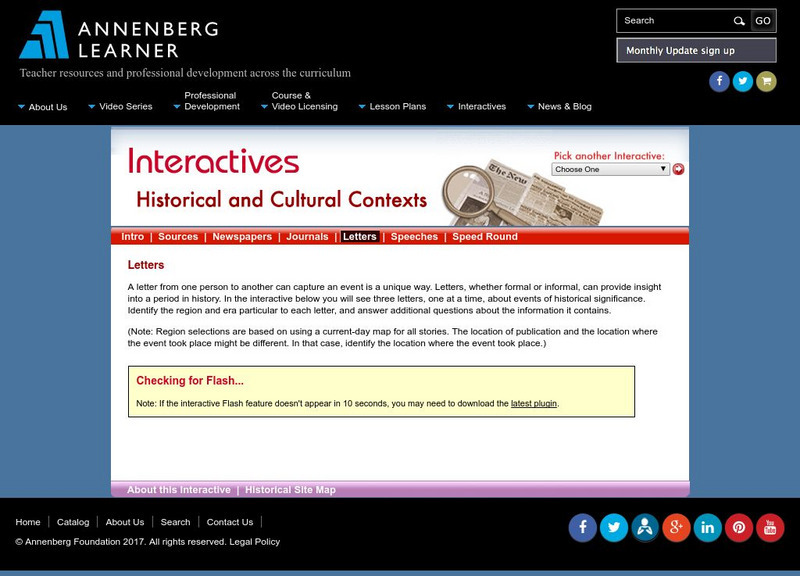
![History Project: Process of Historical Investigation [Pdf] Handout History Project: Process of Historical Investigation [Pdf] Handout](https://d15y2dacu3jp90.cloudfront.net/images/attachment_defaults/resource/large/FPO-knovation.png)
![Nova Southeastern Univ: Research Paradigms and Meaning Making: A Primer [Pdf] Article Nova Southeastern Univ: Research Paradigms and Meaning Making: A Primer [Pdf] Article](https://content.lessonplanet.com/knovation/original/246161-1f2c0ae29b4b63e74270daf9a6a5b49c.jpg?1661550329)
